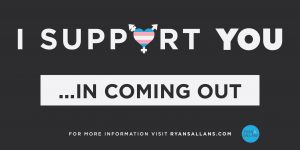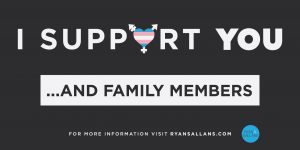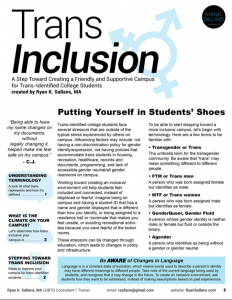Now, more than ever, we need to do better to support transgender people and their families through the coming out process, employment, schools, and health care.
Supporting a person who is transgender can be displayed by respecting transgender individuals, seeking education surrounding the community, and by standing up/speaking out against jokes, commentary or behaviors that create, or have the potential to create, unsafe environments for transgender people.








